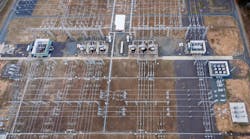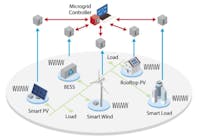Everyone who follows the electric power industry is well aware that everything from power plants to distribution circuits (and in between) is being modified to perform in a digital world. The pace of the changeover varies. The incorporation of intelligent electronic devices (IEDs) into substations was one of the early adaptations, but due to the number of substations and the longevity of most of the components contained within them, conversions across the world are still in progress. The good news is there is a world of new capabilities and improvements in the International Electrotechnical Commission (IEC) architecture supporting those capabilities coming on line all the time.
As we know, modern sensors and other IEDs are the life-giving organs of a digital system and it is the IEC 61850 standard that facilitates interoperability between different equipment and suppliers that makes it possible for these organs to communicate within a substation, for example, and over the larger grid system. The experts suggest that a full digital substation is one in which most of the data related to the primary process is digitized at the point where it is measured. Thereafter, the exchange of that data between devices occurs via Ethernet. This represents the ideal situation. It is what we would do today if we have the luxury of building a greenfield substation.
A few years ago the Protection and Control Journal ran a helpful article entitled “Substation Automation Hybrid“ that addressed the reality that many existing substations will become digital subs over time. Economics and user acceptance may drive the reuse of some installed equipment with the addition of some IEC 61850 devices. The article covers the inclusion of additional IP-based communications as well as non-IP communications that allows the user to maximize equipment reuse and select best in class equipment for their conversion/use process. The article can be found here.
Once our system is composed of fully or mostly digital substations, much more becomes possible. Advanced applications can be rolled out in one’s system, contributing to a smarter power grid. A prime example of great relevance today is the use of digital substations to incorporate local and wide-area situational awareness (SA) into grid networks. At the station level, the digital substation is able to integrate, process and display monitored parameters such as:
- condition data for all primary and secondary equipment plus auxiliary systems.
- environmental and weather conditions.
- thermal (infrared) camera imaging.
- cyber- and physical intrusion data.
In addition to using this information for detecting issues and taking proactive corrective action at an incident level, digital substations can utilize condition based asset management programs for cost-effective fleet-wide maintenance.
Another possible advancement with a digital substation system is wide-area automation and communication. GE suggests that a wide-area network interface can be integrated into the grid operator’s wide area control systems and defense plans. This allows the implementation of fast inter-substation control and protection schemes and, by using gateway solutions to connect substations, routable GOOSE messaging can be used to achieve cyber-secure transfers of the digitized analog and binary state data required to implement wide-area schemes. Inter-substation or inter-voltage level exchanges can be used for: logic controls; fault location and service restoration; load shedding and islanding; and, automatic setting of relays. Get additional insights into the advanced capabilities possible with a digital substation fleet here.


